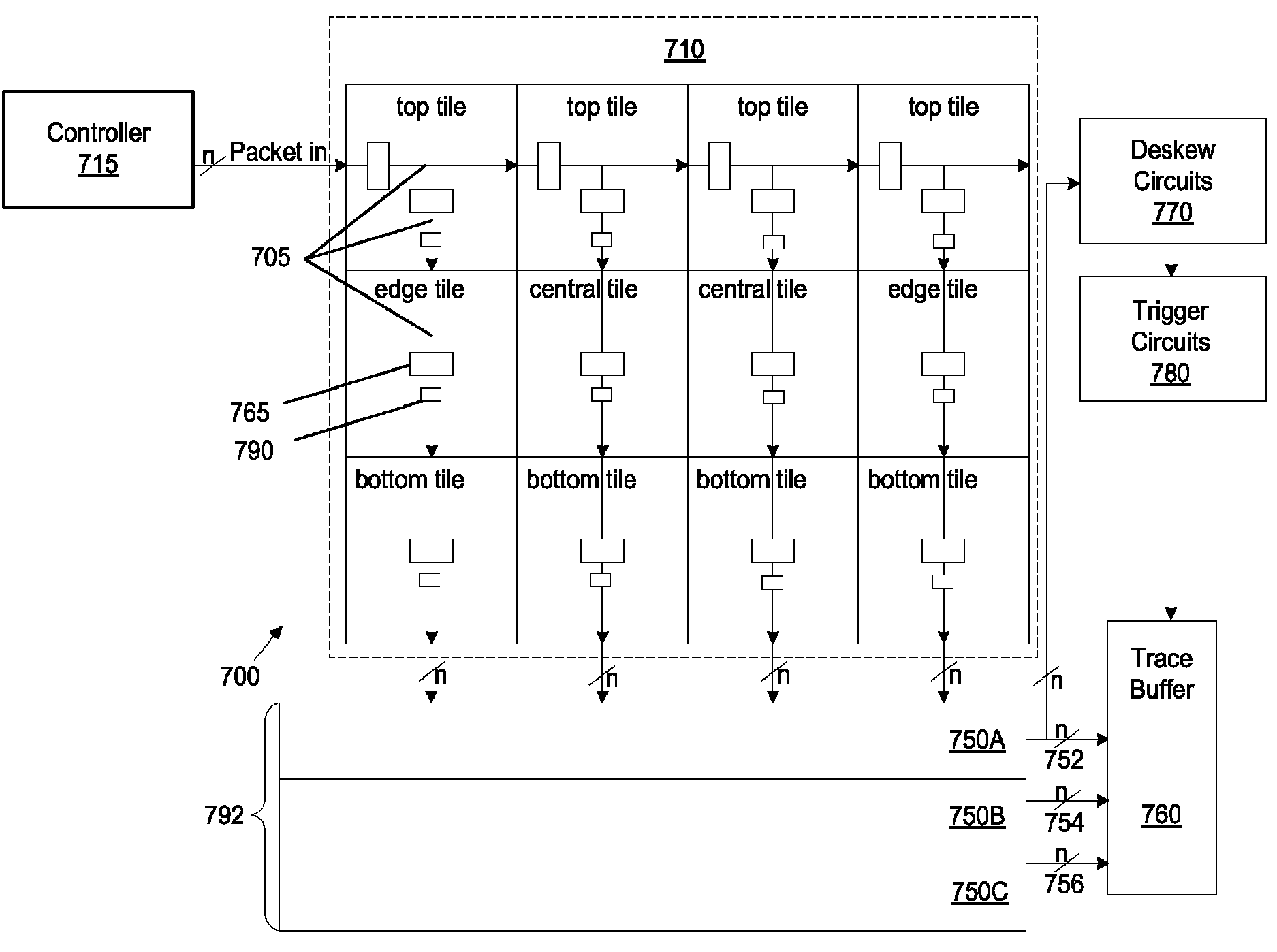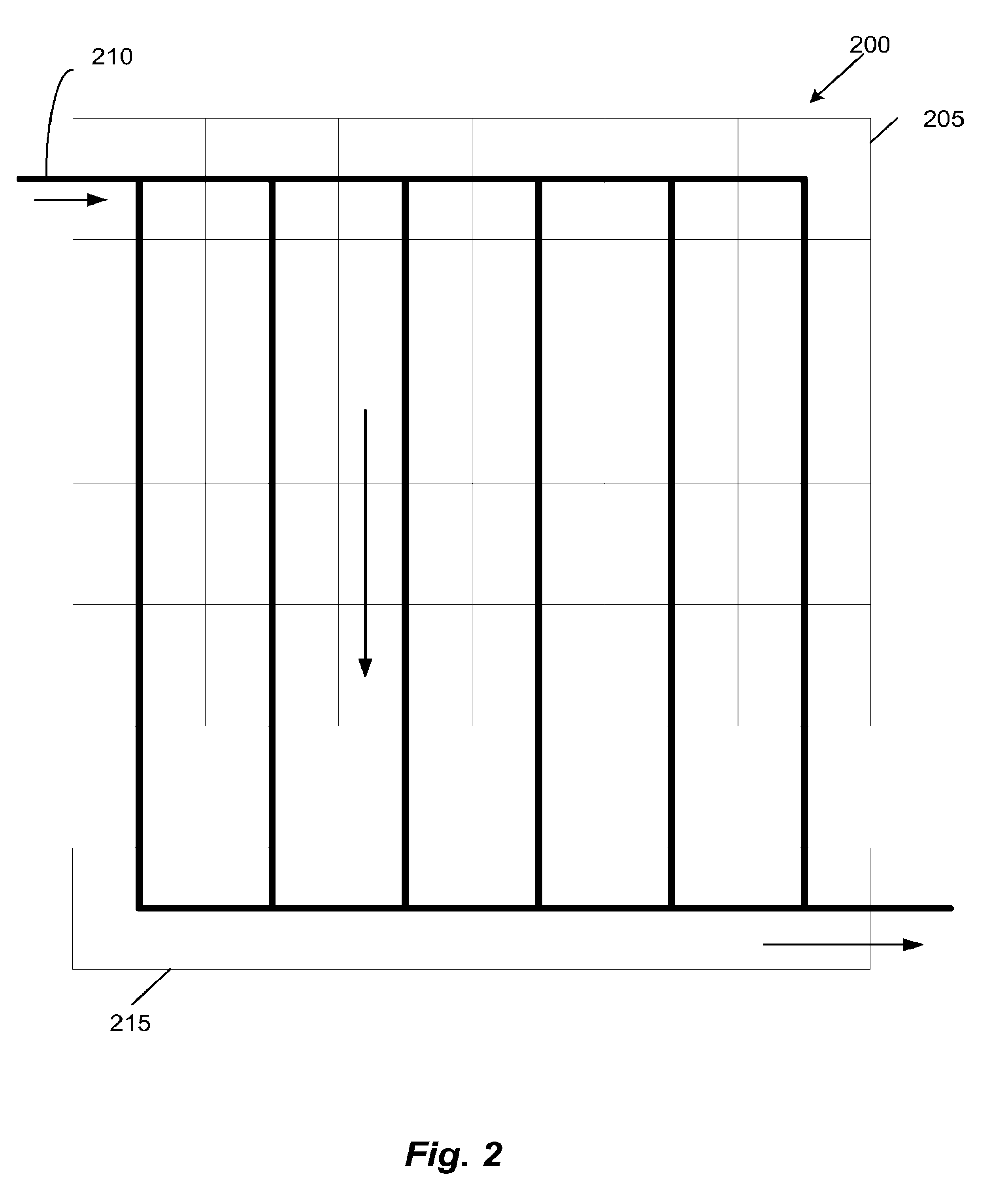Trigger circuits and event counters for an IC
a trigger circuit and event counter technology, applied in the direction of instruments, generating/distributing signals, pulse techniques, etc., can solve the problems of less resources for implementing user designs, less sophisticated user designs, and more complicated debug network resources,
- Summary
- Abstract
- Description
- Claims
- Application Information
AI Technical Summary
Benefits of technology
Problems solved by technology
Method used
Image
Examples
Embodiment Construction
[0063]In the following detailed description of the invention, numerous details, examples, and embodiments of the invention are set forth and described. However, it will be clear and apparent to one skilled in the art that the invention is not limited to the embodiments set forth and that the invention may be practiced without some of the specific details and examples discussed.
[0064]I. Overview
[0065]Some embodiments provide different methods of tracking data values in an integrated circuit (“IC”) by using a secondary circuit structure that is separate from a data routing fabric used to implement a user design. A method of some such embodiments allows a user to select a set of resources to monitor. In some embodiments, signals corresponding to these selected resources are continuously read onto the secondary circuit structure. The method of some embodiments then allows the user to define a trigger event that defines which of these signals will be captured for viewing by the user. The...
PUM
 Login to View More
Login to View More Abstract
Description
Claims
Application Information
 Login to View More
Login to View More - R&D
- Intellectual Property
- Life Sciences
- Materials
- Tech Scout
- Unparalleled Data Quality
- Higher Quality Content
- 60% Fewer Hallucinations
Browse by: Latest US Patents, China's latest patents, Technical Efficacy Thesaurus, Application Domain, Technology Topic, Popular Technical Reports.
© 2025 PatSnap. All rights reserved.Legal|Privacy policy|Modern Slavery Act Transparency Statement|Sitemap|About US| Contact US: help@patsnap.com



